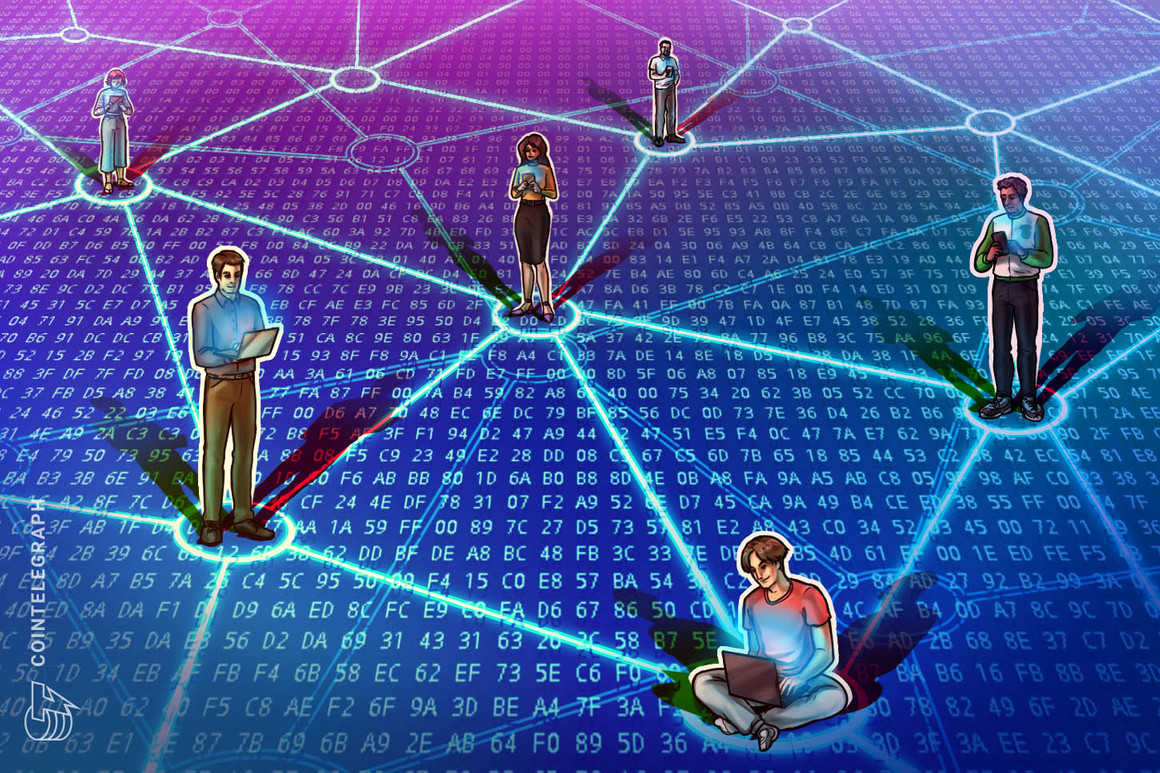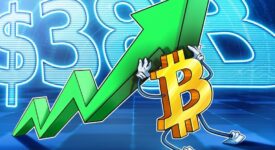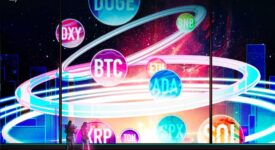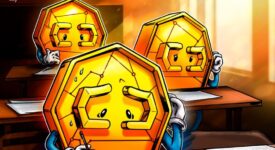
Ethereum Layer 2-based crypto derivatives trading platform dYdX has vowed to become “100% decentralized by EOY” via the protocol’s V4 update.
dYdX primarily offers perpetual contracts, which are derivatives products that borrow elements from both spot margin trading and futures trading but do not have an expiry date.
At present only certain components of dYdX are decentralized, including its Ethereum smart contracts, governance and staking. However its “orderbook and matching engine” are managed by dYdX Trading Inc. — the team that developed the platform.
dYdX announced the V4 update on Twitter yesterday with a new roadmap outlining that: “You are not ready.”
#DYDX will be 100% decentralized by EOY.
You are not ready.https://t.co/0StvepVlgb
— dYdX (@dYdX) April 19, 2022
In a blog dYdX explained that the “primary aspect” of fully decentralizing the platform is focused on the orderbook and its matching engine. The team noted that the main challenges will be scaling throughput (transaction processing power), finality (off-chain trade matching) and fairness (operators not being able to extract value from legitimate trading activity) in a decentralized manner.
“With V4, dYdX will become fully decentralized. There will no longer be central points of control or failure of the protocol; all aspects of the protocol that can be controlled will be fully controlled by the community,” the roadmap reads.
Outlining why the platform is going fully decentralized, dYdX emphasized the “fundamental improvement” that decentralized finance (DeFi) provides over centralized financial services:
“DeFi offers a massive improvement in transparency. For the first time, the financial system itself is no longer a black box to users. With DeFi, users can trust code instead of corporations.”
The V4 update will see dYdX Trading Inc. receive zero trading fees moving forward. Additionally, the platform will also roll out more products and services, such as synthetics and spot and margin trading.
While many DeFi projects often tout that they are “decentralized” due to smart contracts and their automated setups, they are often controlled by a small core team with access to a multisig admin key that gives them ‘god mode’ powers over the protocol. This is often a useful strategy to recover from errors while building the platform, but introduces centralized risks.
U.S. Securities and Exchange Commission chairman Gary Gensler argued that DeFi is mostly centralized during an interview in August last year, noting that:
“These so-called ‘decentralized finance’ platforms actually have a lot of centralization. There’s a group of entrepreneurs that are running these platforms.”
Another DeFi project to announce the move to full decentralization, or being “fully self-sufficient” was DAI stablecoin creator and pioneering protocol MakerDAO in mid-2021.
Related: DeFi token AAVE eyes 40% rally in May but ‘bull trap’ risks remain
Maker Foundation CEO Rune Christensen noted in a blog post at the time that “the Protocol and the DAO will be determined by thousands or perhaps millions of engaged, enthusiastic community members.”
Critics note however that MakerDAO has 5.1 billion centralized USDC stablecoins backing its DAI reserves so the true extent of its decentralization is arguable.
There are currently 5.1 billion USDC and 499 million USDP in the PSM as reserves for Dai’s liquidity.
Dai peg You can swap Dai for 1 US dollar at any time.
— Maker (@MakerDAO) March 31, 2022






